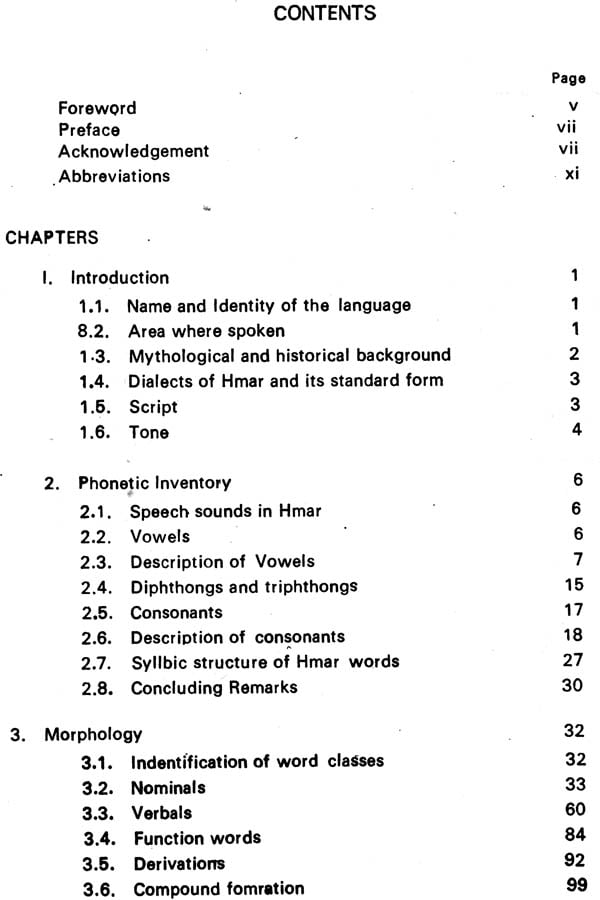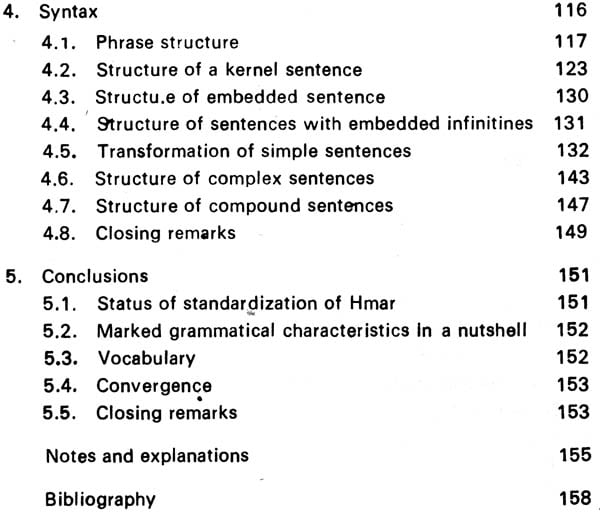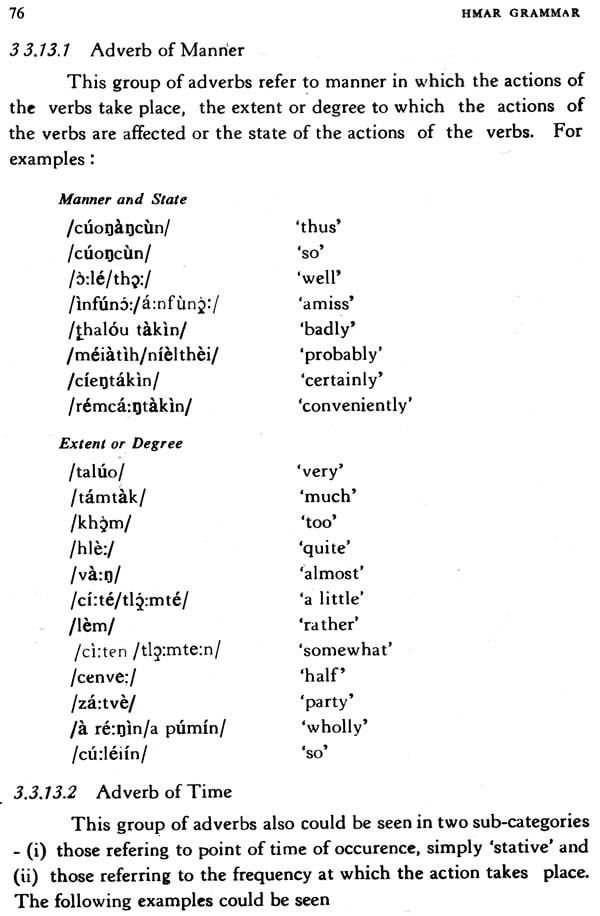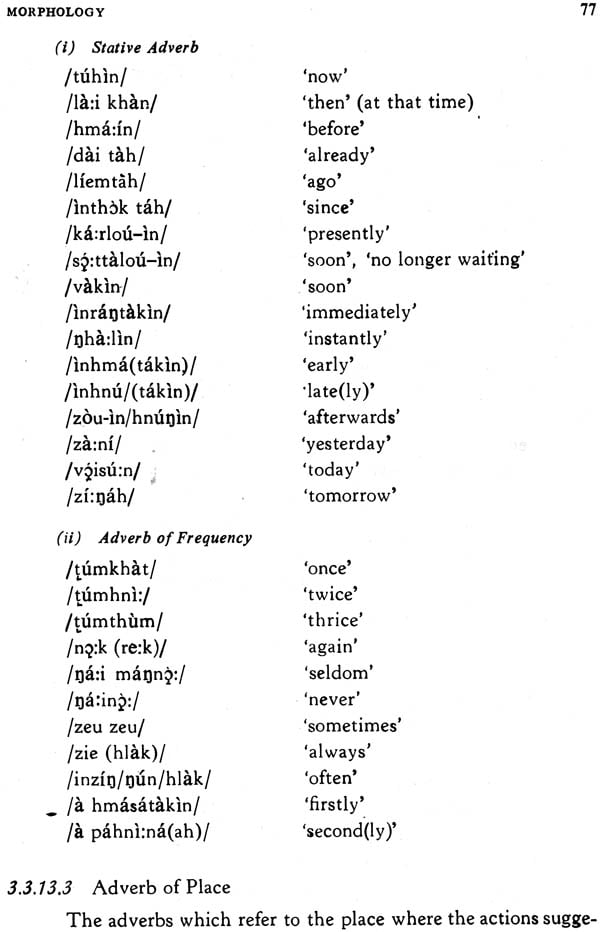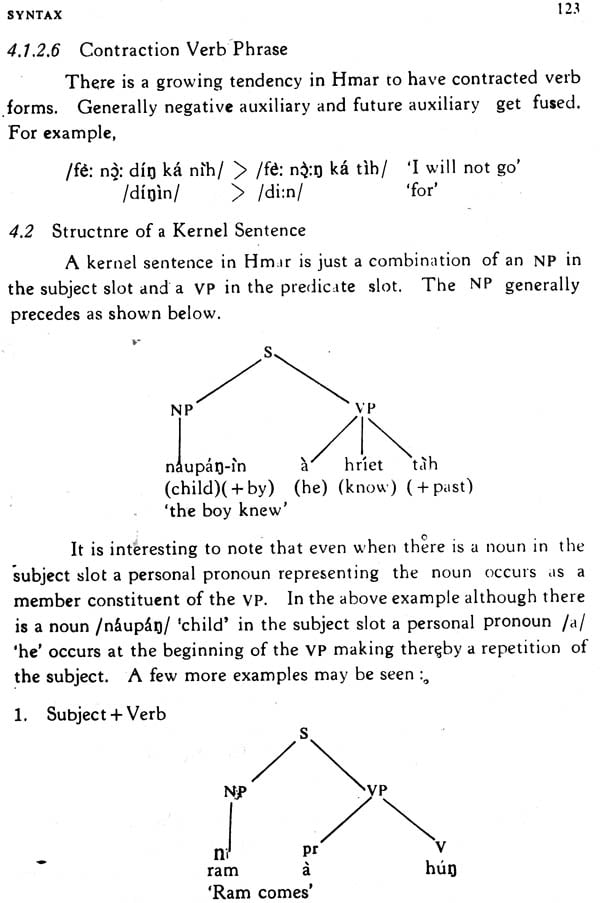
Hmar Grammar
Book Specification
| Item Code: | NAW220 |
| Author: | P. N. Dutta Baruah and V. L. T. Bapui |
| Publisher: | Central Institute Of Indian Languages, Mysore |
| Language: | Hmar and English |
| Edition: | 1996 |
| Pages: | 172 |
| Cover: | PAPERBACK |
| Other Details | 9.50 X 7.00 inch |
| Weight | 290 gm |
Book Description
The Central Institute of Indian Languages is concemed with the promotion and development of Indian languages for meeting the challenges of the modern age. The development of Indian languages can take place by their use in new domains which requires development of materials, methods and manpower for work in the areas of codification, standardisation and modemisation. The work of the Institute encompasses basic research, material production and, in-service training. The Institute is also entrusted with the responsibility of assisting and improving the teaching of Indian languages at various levels by developing new methods, models and materials and by making use of modern technology. The six Regional Language Centers of the Institute are engaged in regular language teaching programmes. The seventh viz., NEREC at Guwahati is entrusted with the responsibility of conducting various programmes in the languages of the North-East. The Institute is also a clearing house of information relating to Indian Languages.
A major programme of the Institute is the study of tribal and other minor languages resulting in writing of grammars and dictionaries. This Study helps in codification of these languages and also in standardisation, which are primary steps for the development of any language. The linguistic description is also a pre-requisite for preparation of language teaching materials. It thus forms part of the Institute’s work to improvise the language education. The Institute is also engaged in finding out shared features between tribal languages and major languages which is an important component in the making of India as a linguistic area.
The grammatical description of tribal and other minor languages prepared by the staff of the Institute do not raise and discuss theoretical questions. These questions are dealt with by the authors in papers in various national seminars. The grammars try to give a basic knowledge of the structure of these languages with the hope that they will be useful to language teachers and to linguists interested in macro Studies of languages. These grammars also fill in the gaps in the knowledge of the linguistic heritage of the country by describing the lesser known languages. The Hmar Grammar is our latest effort in bringing out a book of grammar in a lesser known language like Hmar spoken in Assam, Manipuri and Mizoram.
Data for the Hmar Grammar were collected in the field primarily form three informant by elicitation through word and sentence lists. To our advantages, one of the co-authors is a native speaker of the language. The data, however, were again cross-checked with some other informants. The description may not be exhaustive and there might be gaps to be filled by future researchers. There might be possibilities for alternative analyses. Comments and suggestions passed on to us will be useful to improve our future publications in this series.
While congratulating the authors, I look forward to see that the book is well received among Hmar readers and the community of linguists.
The innumerable tribal languages of the Noth-east have been engaging the attention of the Central Institute of Indian Languages from its very inception in 1969. The Phonetic Readers. Grammars and Dictionaries of a large number of languages have already been prepared and published. Dr. M.R. Ranganatha, a former RRO had undertaken the field work for collecting data for*Hmar language. As he was drafted for some other project of greater importance he could not do much about it.
The senior author of this book had the occasion to work with the Board of Secondary Education, Assam and came across the primary text books in Hmar- There he met the other author and both decided to work for the promotion and development of Hmar language. Thereafter in a series of workshops held for analysing various aspects of the languages of the North-east other Hmar scholars participated. The basic data were collected from these scholars. Subsequently both undertook extensive field work and collected further data for writing this grammar.
It is hoped that this grammar would go a long way in standardizing the language and would serve as a strong supporting material for writing textbooks and dictionaries in the language.
It is possible that some inadvertent errors have crept in. Suggestions and constructive criticisms are welcome from the readers and scholars of the language for removing the shortcomings in the future edition. The authors firmly believe ‘that there is no final version of a good book; a good book is always subject to revision and improvement.
**Contents and Sample Pages**
